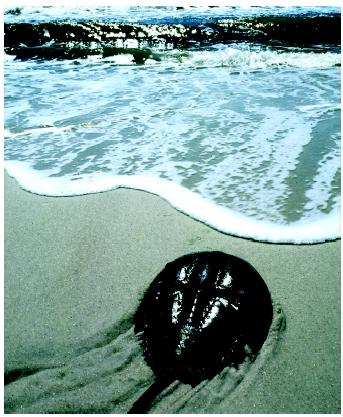Crustacean
The Crustacea are a subphylum of the animal phylum Arthropoda. This is a large and diverse group with more than forty thousand species, including crabs, shrimp, lobsters, crayfish, barnacles, and many near-microscopic members of the zooplankton community. The subphylum is characterized especially by having mandibles and compound eyes and living in mostly aquatic habitats, although the "pillbugs" found under rocks and boards are also crustaceans, and many crabs spend much of their time on land.
The Crustacea are named for their hard, crusty exoskeletons , well known to anyone who has dined on lobster or crab. The hardness of the exoskeleton comes partly from chitin , but moreover from a heavy deposit of

Some crustaceans resemble miniature adults from the moment they hatch, but many species have larval forms with little or no resemblance to the adult. These larvae, and some adult crustaceans, such as krill and cope-pods, are very important members of the freshwater and oceanic plankton community and are a major source of food for corals, fish, baleen whales, and other animals. A few crustaceans turn the tables on these predators by parasitizing the skin of fishes. These parasitic crustaceans are often wormlike and scarcely recognizable as relatives of shrimp and crabs.
SEE ALSO Animalia ; Arthropod ; Lakes and Ponds ; Ocean Ecosystems ; Plankton
Kenneth S. Saladin
Bibliography
Pechenik, Jan A. Biology of the Invertebrates, 4th ed. Boston: McGraw-Hill, 2000.
Ruppert, Edward E., and Robert D. Barnes. Invertebrate Zoology, 6th ed. Fort Worth, TX: Saunders College Publishing, 1994.
See Regier et al 2010 - Arthropod relationships revealed by phylogenomic analysis of nuclear protein-coding sequences. Nature 463, 1079-1083.